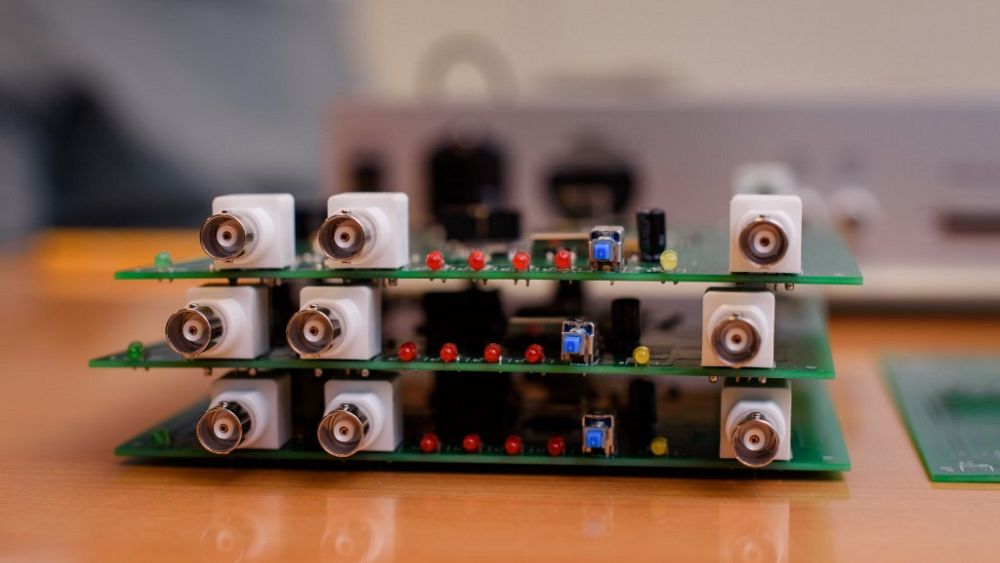Deep in the Riga Technical University campus, a team of researchers are looking at technology that will one day help prevent asteroids from hitting Earth.
The very high-precision chronoscopes built by hand in the laboratory of the Latvian start-up Eventech are used today to track the movements of satellites.
This year, the company won a contract from the European Space Agency (ESA) to develop instruments capable of assessing the possibility of deflecting the course of an asteroid before it gets too close to our planet.
The American NASA intends to launch next year the first stage of the AIDA mission to deviate the trajectory of an asteroid and to assess the impact of such an operation – under the name of Double Asteroid Redirection Test (DART).
Also, as part of DART, on July 22, 2021, a Falcon 9 rocket from Elon Musk’s Space X must raise a 500 kilogramme probe equipped with a camera, in the direction of the asteroid Didymos that it must hit. to modify its current course which risks approaching Earth in 2123.
Eventech’s chronoscopes should be ready for the HERA follow-up mission, expected five years later to determine whether this impact has indeed moved the asteroid off course.
“Our new technology, which will equip ESA’s second spacecraft, named HERA, will measure whether the impact took the Didymos away from its previous course, thus avoiding harming humanity,” Imants told AFP Pulkstenis, Eventech engineer.
“It is much more interesting to go where no man has ever been than to make mundane consumer electronics for huge profits,” he insisted, borrowing the famous Star Trek formula, the 1960s sci-fi television series.
Eventech’s chronoscopes are part of this Baltic state’s space technology tradition, dating back to Soviet times when Sputnik – the first man-made satellite to orbit the Earth – was launched in 1957.
They measure the time it takes for a pulse of light to reach and return to an orbiting object.
Eventech devices can record time measurements down to a picosecond – or a thousandth of a billionth of a second – allowing them to be converted into distance measurements with an accuracy of no more than two millimeters.
Chronoscopes for deep space
Around ten chronoscopes are produced each year by the Latvian laboratory, to equip observatories all over the world.
They make it possible to observe the Earth’s atmosphere, increasingly congested by new waves of private satellites adding to traditional scientific and military devices.
“Following them all requires adequate tools”, underlines Pavels Razmajevs, Director of Operations at Eventech.
Although Latvia didn’t become a full member of ESA until 2016, its engineers have been tracking satellites since the Soviet era.
Latvian University has its own laser telemetry station located in a forest south of Riga.
To manufacture their devices, Eventech engineers use analog parts as much as possible because the microchips need nanoseconds to evaluate the signal, too long for measurements calculated in picoseconds.
Even the physical length of the motherboard can affect the speed at which the signal travels from one circuit to another.
While chronoscopes are used for measurements from Earth, a different device designed for distant missions in space is being developed in another corner of the lab, intended to track different interplanetary objects from a probe. space in motion.
“There is no GPS coverage device on other planets, so you have to take your own precision telemetry equipment with you,” Pulkstenis explained.
Developing devices for deep space is a very complex task, but that’s what the engineers at Eventech appreciate the most.
“Our cutting edge technology has to withstand extreme temperatures in space and cosmic radiation,” Pulkstenis notes, but “it’s a pleasant challenge.”






